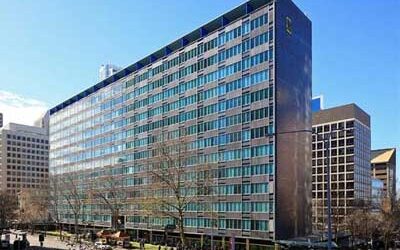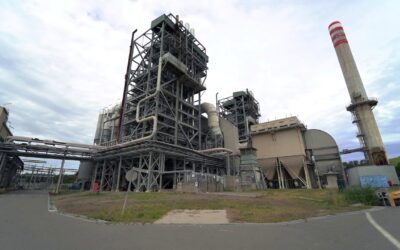The Court of Appeal in Della Franca v Lorenzato; Burwood Council v Lorenzato [2021] NSWCA 321 has recently overturned a Supreme Court decision in which it was held that a council resolution was a ‘policy’ relating to flooding and thus required to be disclosed on a s 10.7 (previously s 149) certificate issued pursuant to the Environmental Planning and Assessment Act 1979 (NSW) (“the Act“).
Background
In 2011, Ms Lorenzato purchased a property in Burwood, NSW from Mr Della-Franca.
Unbeknownst to Ms Lorenzato, in about 1904 a pipe was installed on the subject land for the purpose of draining stormwater. The residence was subsequently built over the pipe. Mr Della-Franca, who purchased the property in 1989, was unaware of the existence of the pipe until 2001 when Burwood Council (“Council“), investigating recent complaints of stormwater inundation, advised him that there was a deteriorating stormwater pipe underneath his property.
Following the discovery of the pipe, Council engineers concluded that the pipe needed to be decommissioned, a drainage easement created on the northern and western boundaries of the property, and a new stormwater pipe installed.
On 11 June 2002, a resolution was passed by Council (“the 2002 Resolution“), in which it was decided that Council would attempt to either negotiate or obtain by way of compulsory acquisition an easement over the existing pipe, noting ‘future development of the property should include the establishment of an easement adjacent to the side boundary for drainage purposes.’
Following the 2002 Resolution, negotiations commenced between Council and Mr Della-Franca, however no agreement could be reached. By 2003, Council had decided not to proceed with the proposed works and would investigate the possibility of relocating the pipe onto a neighbouring property.
In 2010, Mr Della-Franca placed the property on the market. As part of the conveyance, Mr Della-Franca had obtained from Council a s 149 certificate. This certificate did not disclose the existence of the pipe and settlement of the property completed in 2011 without issue.
A few months after settlement of the property, the pipe became blocked and stormwater caused flooding to Ms Lorenzato’s property. It was at that time Council advised her of the existence of the pipe.
Supreme Court Proceedings
In 2017, Ms Lorenzato commenced proceedings against Council claiming damages for negligent misstatement in respect to the s 149 certificate. In particular, Ms Lorenzato claimed that the 2002 resolution was a policy adopted by Council that affected the land by restricting “the development of the land because of the likelihood of … flooding” and thus, should have been disclosed at question 7 or 7A of the planning certificate. By answering ‘no’ to those questions, Ms Lorenzato claimed Council had given an incorrect and misleading statement for which she relied upon.
Following the Supreme Court hearing, Justice Fagan found for Ms Lorenzato, determining:
- The 2002 Resolution’s purpose was ultimately to reduce the risk of flooding by putting in place steps that would achieve that result.
- The 2002 Resolution contained a statement that ‘future development of the property should include the establishment of an easement adjacent to the side boundary for drainage purposes’, and that whilst this statement did not state that any future development would be contingent upon the granting of an easement, ‘that was what it meant’.
- The 2002 Resolution was not revoked or abandoned at the time the planning certificate was issued.
- The 2002 Resolution was a policy that restricted the development of the land “because of the likelihood of … flooding”.
- Therefore, Council had erroneously answered ‘no’ in respect to question 7 of the planning certificate.
Court of Appeal Proceedings
Council appealed the decision on a number of issues, in particular, the decision by Justice Fagan that the 2002 Resolution was a policy.
The Court of Appeal unanimously upheld the appeal, in particular making the following findings.
Was the 2002 Resolution a Policy?
In determining whether the 2002 Resolution was a policy as required by question 7, the Court of Appeal considered the relevant statutory framework under which the certificate was issued.
In particular, the Court considered the Act, which provided for the inclusion in certificates of such matters “as may be prescribed”, as well as the Environmental Planning and Assessment Regulation 2000, which prescribed those matters. The Court also considered the Floodplain Development Manual of April 2005, which had been issued pursuant to s 733 of the Local Government Act 1993 (NSW) and was still current in August 2010.
The Floodplain Development Manual set out what matters should and should not be included in the planning certificate as far as flooding was concerned, and included a paragraph that stated:
“…councils should only provide information under section 149(2) in relation to land subject to flood related development controls (land at or below an FPL [flood planning level] for development control) where such controls are imposed by policies adopted by council in accordance with statutory requirements under the Local Government Act 1993…”
This suggests that the reference to a “policy” was not concerned with a land-specific decision (such as the 2002 Resolution) but rather with the relationship of particular land to general floodplain levels.
Even if the 2002 Resolution was considered a policy (which the Court of Appeal rejected), it was not one which itself restricted the development of land because of flooding. At most, it was a “policy” to attempt to reach an agreement with Mr Della-Franca in respect of a proposed easement over the existing pipe and, on the Court’s view, could not be described as a policy that restricted development of the subject land due to flooding.
Was the 2002 Resolution Abandoned?
The Court of Appeal held that the 2002 Resolution had been abandoned by Council by the time the planning certificate was issued in 2010. Following Council’s decision in 2003 to not proceed with the proposed works and investigate the possibility of relocating the pipe, the Court of Appeal found that by the time the planning certificate was issued in August 2010, Council did not have a ‘policy’ to do anything ‘except investigate options to address excess stormwater in the area, not all of which necessarily involved any action being taken in relation to the subject land.’
Conclusion
This decision should be a welcome relief to councils, as well as providing greater clarity on councils’ obligations when issuing planning certificates pursuant to s 10.7 of the Act.
You can read the full decision here: Della Franca v Lorenzato; Burwood Council v Lorenzato [2021] NSWCA 321


